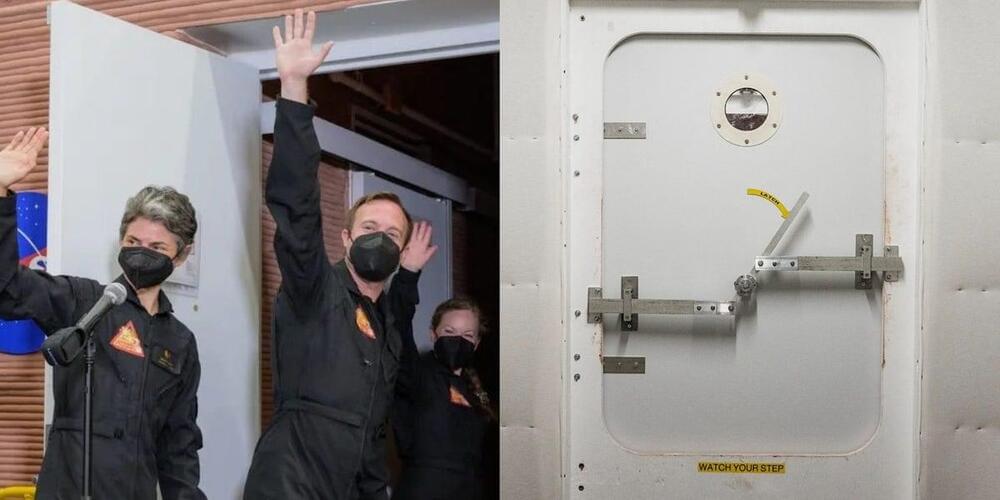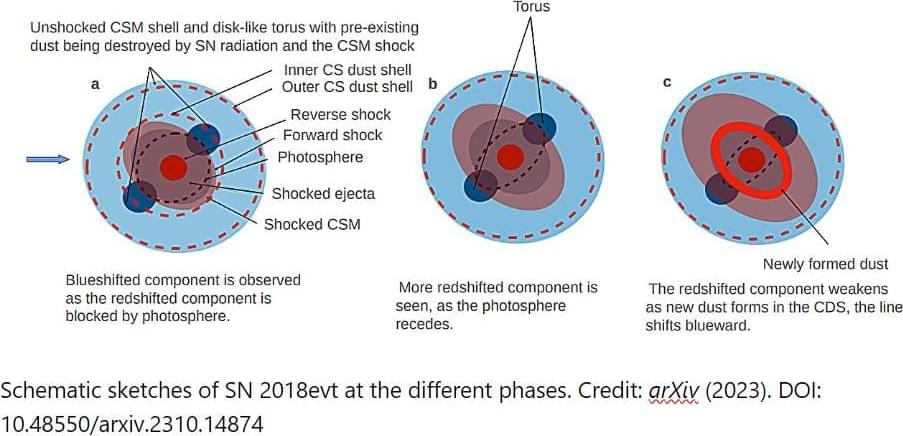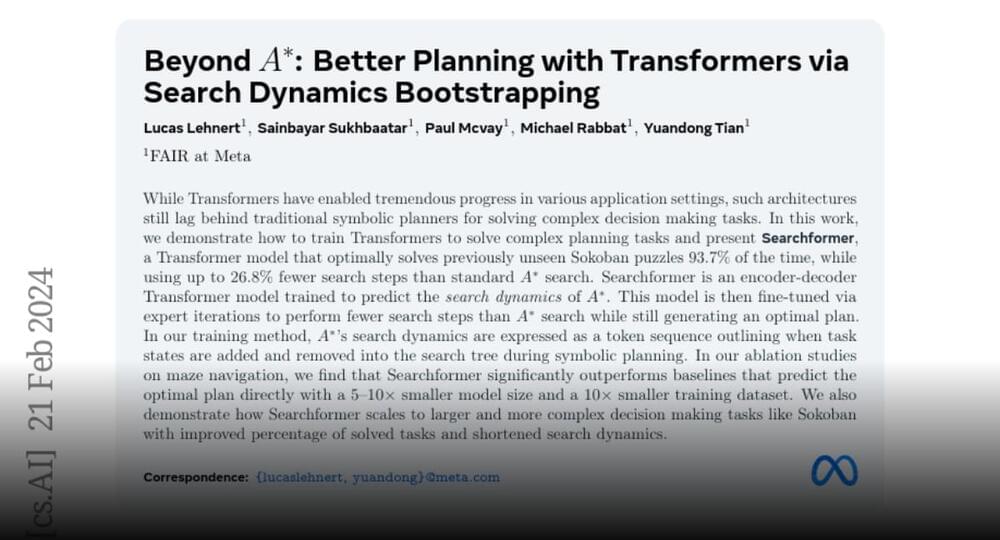NASA opened applications for people to live a paid year in its CHAPEA Mars simulation. The job requires an agreeable personality and STEM degree.



Cosmic dust—like dust on Earth—comprises groupings of molecules that have condensed and stuck together in a grain. But the exact nature of dust creation in the universe has long been a mystery. Now, however, an international team of astronomers from China, the United States, Chile, the United Kingdom, Spain, etc., has made a significant discovery by identifying a previously unknown source of dust in the universe: a Type 1a supernova interacting with gas from its surroundings.
The study was published in Nature Astronomy on Feb. 9, and was led by Prof. Wang Lingzhi from the South America Center for Astronomy of the Chinese Academy of Sciences.
Supernovae have been known to play a role in dust formation, and to date, dust formation has only been seen in core-collapse supernovae—the explosion of massive stars. Since core-collapse supernovae do not occur in elliptical galaxies, the nature of dust creation in such galaxies has remained elusive.

The landscape of artificial intelligence (AI) applications has traditionally been dominated by the use of resource-intensive servers centralized in industrialized nations. However, recent years have witnessed the emergence of small, energy-efficient devices for AI applications, a concept known as tiny machine learning (TinyML).
We’re most familiar with consumer-facing applications such as Siri, Alexa, and Google Assistant, but the limited cost and small size of such devices allow them to be deployed in the field. For example, the technology has been used to detect mosquito wingbeats and so help prevent the spread of malaria. It’s also been part of the development of low-power animal collars to support conservation efforts.
Small size, big impact Distinguished by their small size and low cost, TinyML devices operate within constraints reminiscent of the dawn of the personal-computer era—memory is measured in kilobytes and hardware can be had for as little as US$1. This is possible because TinyML doesn’t require a laptop computer or even a mobile phone. Instead, it can instead run on simple microcontrollers that power standard electronic components worldwide. In fact, given that there are already 250 billion microcontrollers deployed globally, devices that support TinyML are already available at scale.
Gemini 1.5 Pro includes a breakthrough in long-context understanding, handling up to 1 million tokens. It can also decipher the content of videos and describe what is happening in a scene.
In the world of large language models (LLMs) like ChatGPT, so-called “tokens” are the fundamental units of text that these models process, akin to words, punctuation, or parts of words in human language.

Interacting many-body physical systems ranging from neural networks in the brain to folding proteins to self-modifying electrical circuits can learn to perform diverse tasks. This learning, both in nature and in engineered systems, can occur through evolutionary selection or through dynamical rules that drive active learning from experience. Here, we show that learning in linear physical networks with weak input signals leaves architectural imprints on the Hessian of a physical system. Compared to a generic organization of the system components, (a) the effective physical dimension of the response to inputs decreases, (b) the response of physical degrees of freedom to random perturbations (or system “susceptibility’‘) increases, and © the low-eigenvalue eigenvectors of the Hessian align with the task.
Neuralink’s first human patient able to use mouse…:
Elon Musk is the visionary behind Neuralink. He announced that the first human recipient of the company’s brain chip implant has fully recovered. The individual has demonstrated the ability to use a computer mouse solely through thoughts. Watch this video for all details.
#Neuralink #ElonMusk #WION
About Channel:
WION The World is One News examines global issues with in-depth analysis. We provide much more than the news of the day. Our aim is to empower people to explore their world. With our Global headquarters in New Delhi, we bring you news on the hour, by the hour. We deliver information that is not biased. We are journalists who are neutral to the core and non-partisan when it comes to world politics. People are tired of biased reportage and we stand for a globalized united world. So for us, the World is truly One.
Recorded earlier
A robotic spacecraft is expected to touch down on the moon’s surface Thursday night, in what will mark the United States’s first uncrewed commercial moon landing.


